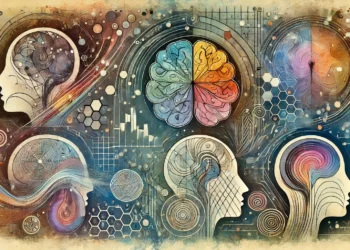A llama named Winter might have given us a treatment against the coronavirus.

A team of researchers from The University of Texas at Austin, and the National Institutes of Health and Ghent University, Belgium, report developing a potential treatment for COVID-19 by combining two antibody molecules produced by llamas. Because of the small structure of this molecule, it’s probable that it can be administered via an inhaler, allowing it to be administered directly at the site of infection.
Initial testing showed that the compound is effective at blocking the virus’ ability to infect cells in culture. Despite the encouraging results, the treatment still needs to undergo pre-clinical and clinical trials. The study is currently in a preprint format and will be published in the journal Cell on May 5th here.
No-outbreak llama
“This is one of the first antibodies known to neutralize SARS-CoV-2,” said Jason McLellan, Associate Professor of Molecular Biosciences at UT Austin and co-senior author, referring to the virus that causes COVID-19.
The research draws its roots in previous work performed by the team after the SARS and MERS outbreaks in 2016. They were investigating whether a potential vaccine could be designed against these pathogens in llamas, which they injected with stabilized spike proteins recovered from the viruses. These proteins are the biochemical mechanisms that allow the virus to infect human cells.
Llamas, and the camelid family they belong to, produce two kinds of antibodies — one that’s similar to human antibodies, and one that’s about a quarter of the size of ours. The antibodies used in this study were isolated from a llama named Winter, which was about 9 months old at the time.
The smaller antibody molecule that was effective against the SARS virus was able to bind to the SARS-CoV-2 virus, the one responsible for the COVID-19 outbreak, but only “weakly”. However, by merging two of these together, the team created the current treatment. In cell cultures, it showed great effectiveness in blocking the virus’ ability to infect cells. In essence, it chemically ties to the proteins the coronavirus uses to pass through cell membranes and doesn’t let go — so the virus can’t use those proteins any longer.
The team is now preparing for preclinical studies; if everything goes well, the treatment will enter clinical testing (on humans). Just like every other drug, it won’t be approved for use until it passes both of these steps and is deemed safe.
Vaccines against the disease understandably get a lot of attention these days, but this isn’t a vaccine — it’s a treatment. Vaccines are administered in order to train our immune systems against different viruses and start conferring natural protection one or two months after use. Treatment can be used to directly address (or prevent) infection instantly, so, if approved for use, it could be employed to treat patients who are already showing symptoms.
“Vaccines have to be given a month or two before infection to provide protection,” McLellan said. “With antibody therapies, you’re directly giving somebody the protective antibodies and so, immediately after treatment, they should be protected. The antibodies could also be used to treat somebody who is already sick to lessen the severity of the disease.”
Such a treatment would be useful for at-risk groups, such as the elderly (who also show a relatively modest response to vaccinations) and workers who have a high risk of exposure such as healthcare workers. The ability to administer this treatment via an inhaler also makes it ” potentially really interesting as a drug for a respiratory pathogen because you’re delivering it right to the site of infection,” said Daniel Wrapp, a graduate student in McLellan’s lab and co-first author of the study.






